This past fall we made the decision to seek out occupational therapy (OT) for Caroline. She was struggling a great deal with the act of writing and we also suspected she had some midline issues. With her permission, I’m going to write about our experience with occupational therapy for dysgraphia or writing problems.
We strongly believe in letting Caroline develop at her own pace. This has been true since she was born. She was very early on some milestones and on the later end of others. We simply gave her time and knew she would do things when she was ready.
We took the same approach to writing. Eventually, though, it was clear that there were issues that weren’t going to clear up simply with more time. So shortly after she turned eight, our pediatrician referred us to an excellent office nearby at our request.
OT For Dysgraphia
Caroline was very nervous about going to OT. When I asked her why, she said she was worried people would make fun of her. Not being able to write well when other kids your age can is hard. Even though she had been with me many times at my PT appointments, she was still naturally concerned with something new and unknown.
We were blessed with a wonderful occupational therapist named Jen. It took a few visits, but Caroline warmed up to her and grew to like her and OT very much. Jen’s assessment was that there were issues going on, but they were very fixable with some work.
When I asked Caroline to describe what she did at OT, she said they did drawing, coloring, puzzles, pick up activities, and swinging. She enjoyed all of the activities, but especially being able to work one-on-one with Jen. She absolutely loved the swing!
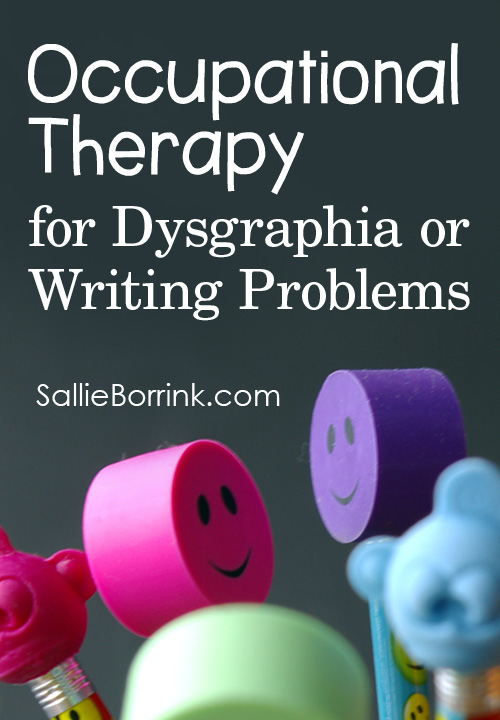
Caroline had fourteen appointments in all. At first we went weekly, then every few weeks. We also did almost daily figure eight and alphabet work at home. This involved tracing large sideways figure eights on paper in order to create more connections between the right and left hemispheres of the brain. After doing three figure eights, she would write a letter of the alphabet and say it aloud. Then she would continue with this through the entire alphabet (three figure eights and a letter). At first it was very challenging, but over time it became natural (as it should be).
Truly Remarkable Results
We are thrilled with the results. It took a bit of work for it all to kick in, but once it did the progress was significant. My hope when we started was that by the end of the school year Caroline would be writing independently and regularly. We are just about there.
In the past, Caroline would do anything and everything to avoid writing. Now she is constantly writing on her own, asking me how to spell words, etc. The week she finished OT she decided on her own she wanted to write a letter to Jane O’Connor, the author of the Fancy Nancy/Nancy Clancy books. (Caroline says to tell you she highly recommends them and she even had a Fancy Nancy birthday party once!) I was so thrilled for her that writing was something she wanted to do now and it no longer overwhelmed her.
I’ve wondered if we should have sought out help sooner, but I honestly think we did it at the right time. The way everything fell in place in terms of getting the referral, getting an appointment right away, insurance paying for almost all of it (since we had maxed out our deductible with my issues), and the desire on Caroline’s part to fix what she knew was a problem indicates to me that we did it at the right time.
I’m so thankful. Issues with writing hold a child back in almost every area. I’m so glad for Caroline’s sake that she took on this challenge and overcame it.
Dysgraphia Resources
You can see all of the posts on my site that deal with the topic of dysgraphia here: Dysgraphia posts
If you would like to read further about dysgraphia, here is a selection of books tackling the subject from a variety of perspectives.
- Handwriting Brain-Body DisConnect: Adaptive teaching techniques to unlock a child’s dysgraphia for the classroom and at home
- Helping Your Child with Language-Based Learning Disabilities: Strategies to Succeed in School and Life with Dyslexia, Dysgraphia, Dyscalculia, ADHD, and Processing Disorders (See my review of this book: Homeschooling a Child with Language-Based Learning Disabilities (LBLD))
- Smart but Scattered: The Revolutionary “Executive Skills” Approach to Helping Kids Reach Their Potential
- The Dysgraphia Sourcebook: Everything You Need to Help Your Child
- Smart but Scattered Teens: The “Executive Skills” Program for Helping Teens Reach Their Potential
Best wishes as you help your child!
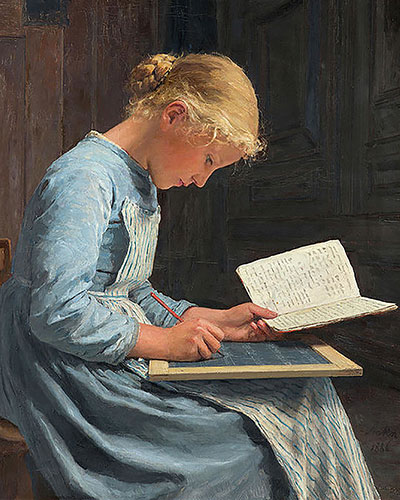

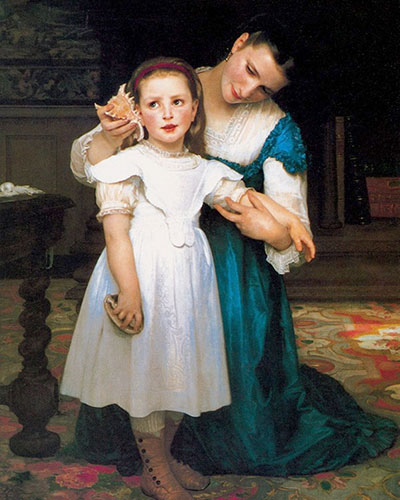

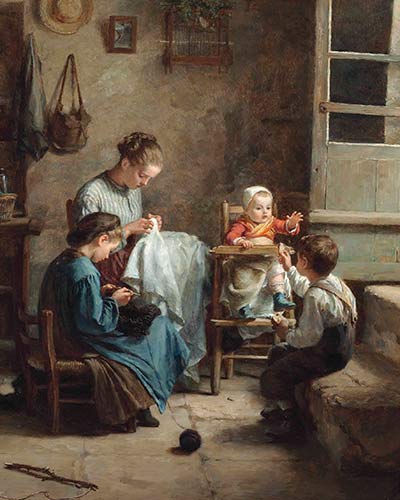


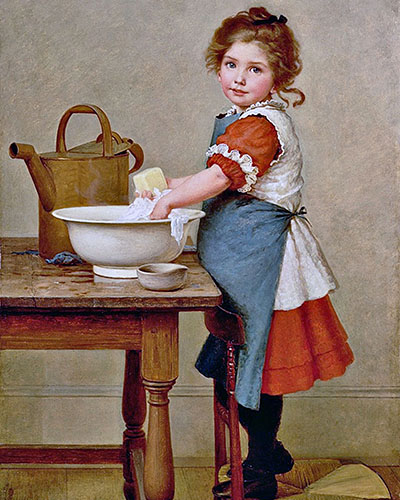



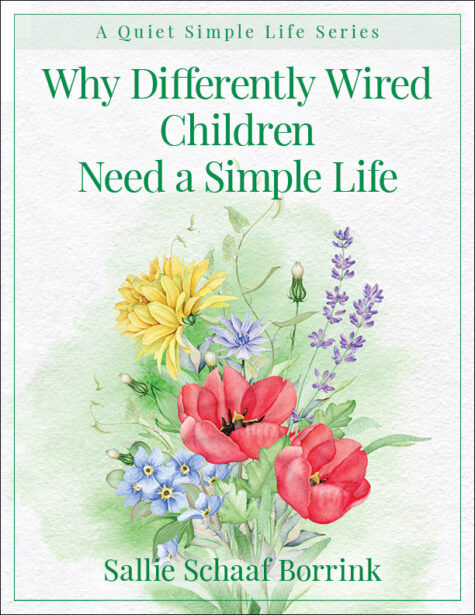

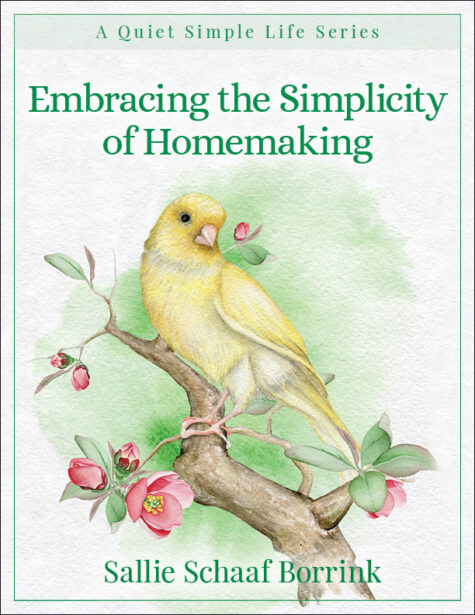
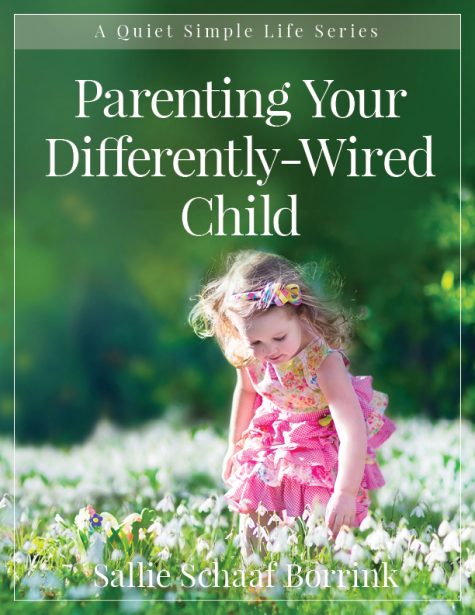





 Teachers Who Become Homeschoolers Are The Indicator Species
Teachers Who Become Homeschoolers Are The Indicator Species
We sought OT help for our son early on when we had the start of his long list of diagnosis. Sensory Processing Disorder followed by Aspergers, and then many learning disorders etc. The OT helped with it all and one thing they worked on a LOT was handwriting and I think they are amazing 🙂 We learnt a lot from the appointments and were able to do a lot at home too. I think a visit to an OT is worthwhile for every child who doesn’t like handwriting, just to see if there is a physical or neurological reason why, because the help you get from the OT if there is a problem will save so many tears in the long run. Loved reading this and hearing of your daughter’s success! Well done to her and to you and the OT 🙂 Go team!
Kelly,
I agree about visiting an OT if there is a lot of resistance to handwriting. Getting the handwriting issues sorted out truly has changed everything for our homeschooling and Caroline’s learning options. So much depends on being comfortable with the act of writing – math, spelling, etc. For children who have midline issues like Caroline, they have to work ten times harder just to form the letter let alone do whatever work they are trying to accomplish.
I wanted to share our story to hopefully help other parents make the decision to seek out a professional opinion if their child really struggles with the physical act of writing. I’m glad your experience was helpful too!
Hey, Sallie, I got your newsletter today and immediately clicked on this post. Just had my boys diagnosed with a few things, but a few things I’m still going by “guessing!” I saw a Dianne Craft supported session at a homeschool convention this past weekend, and KNOW I need to do the midline practices with my boys. My 11 year old has major writing issues, and I’m hoping to help him with this. I was curious who diagnoses something like dysgraphia?
Thanks for your help!
Jenn,
An OT would be the one to diagnose dysgraphia. They can also check for other things at the same time in case you have other concerns.
I’m an OT who works in WV (though I believe this is true federally)— OTs do NOT diagnose, we only see symptoms and treat accordingly. So we may do fine motor or visual-perceptual assessments or use a handwriting test/rubric for data that may support a diagnosis of dysgraphia. But as dysgraphia involves more than just those skill components, a licensed psychologist (or neuropsychologist, in our state) does the actual diagnosing.
Hi. I’m a pediatric occupational therapist near Atlanta, GA. I just wanted to thank you for your post. I work on handwriting (among other things) with my clients and sometimes I wonder if I’m making a difference. Your post is a nice reminder of how OT can make a big difference in a child’s life. Thanks for the inspiration!! Kristin
Hello! Searching for a person who does exactly what you do in or near Alpharetta, GA…any suggestions would be greatly appreciated!!!
Now Feb 2019… this thread is old…Did you ever find help? Ava White used to be in GA… a sweet, smart woman who would be a good resource.
Kristin,
You are very welcome! Our OT made a huge difference and I know we will always consider her a valuable part of Caroline’s educational experience. 🙂
Did Caroline have issues with holding a pencil properly? Thanks for your post.
Proper holding was not a huge issue for her. I think we tweaked it a bit, but that was all.
Hello Sallie,
I am wondering, did the OT prescribe the figure 8 exercise, or was that something you found out about through Dianne Craft? Also, how many weeks/months did you do the figure 8s before you saw results? Looking for a motivational push before I start this with my kiddo. Thanks!
Lisa,
If I remember correctly, I had already ordered some things from Dianne Craft that included the figure 8 exercise. So I think I mentioned it and the OT said to definitely use it. I took the original that I got from Dianne to a print shop and had multiple copies made on cardstock so we could use it over and over again. If you get it printed, definitely do it on cardstock. Paper won’t hold up to the repeated use.
It took a number of months before we saw significant results. It’s definitely a process. We did OT for five or six months (?). A year later we could really tell the difference.
Great article! My 9 year old son was recently diagnosed with dysgraphia and this was a helpful article for me to understand how OT could benefit him. Thank you!
I’m so glad you found it helpful! OT was a game changer for us. I hope you find similar success with your son. 🙂
Glad I saw the link to this article. 🙂 I’m waiting for insurance approval for an OT evaluation for my boys. Thanks for sharing your experience.
You’re welcome, Dianna! I hope you get some answers for your boys. 🙂
My 8yo really struggles with handwriting too. I’ve been letting him type and he’s really fas tat that now. I never considered handwriting issues as something to seek a diagnosis for! Something to consider.
What do you do if you think your student has dysgraphia but those above you say they cannot test for it and time would be better spent coming up with strategies instead of a name for a problem you think exists.
Brenda,
Could you clarify a bit more what you mean? Are you a teacher with a student and the higher ups in your school won’t test? Or are you a parent with a child and the school won’t test?
I’m a school-based OT, also, and we can certainly use clinical reasoning, writing sample, and other assessments to determine symptoms of dysgraphia that are present. But I think it’s important to make a neuropsychologist referral to rule out differential diagnoses, as dysgraphia occurs concomitant with other issues, too (in case parents haven’t gone that route yet.)
I wish you would’ve taken before/after photos of her handwriting, just to show how much it improved after working with her therapist… it’s always fun to see things like that. Regardless, I’m glad it ended up working for her – my son was having trouble with his handwriting for a while, but luckily for us it wasn’t bad enough to call for therapy and he ended up getting it figured out on his own eventually. But I know how frustrating something like not being able to write well can be for a child.